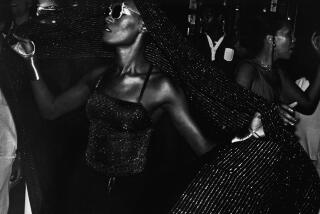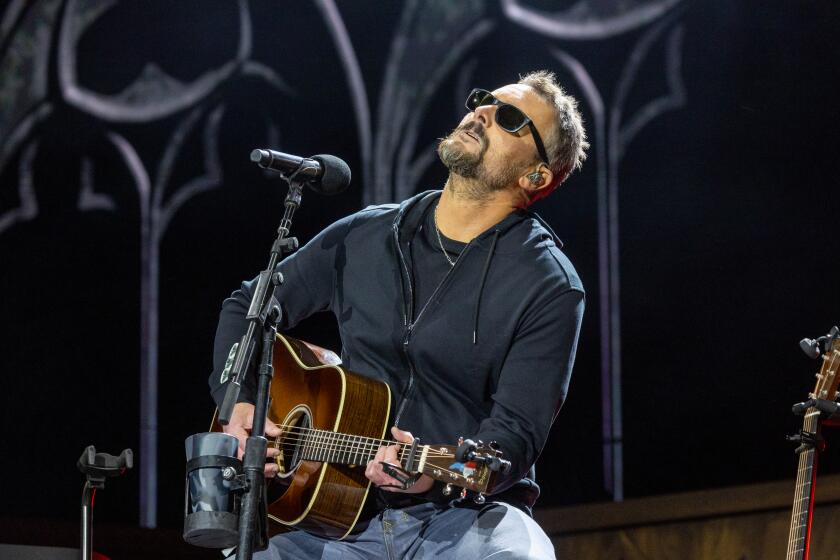For Paul Simon, the world is his sound stage
Two years ago Paul Simon traveled to Kenya with his wife, the singer Edie Brickell, and their three children. The trip wasn’t strictly musical: “We went to see the migration of the animals,” Simon says. But fans of this Rock and Roll Hall of Famer have known about his interest in African sounds since 1986, when he set a new benchmark for globally oriented pop with the Grammy-winning “Graceland.” No surprise, then, that Brickell used a small digital recorder to make a sort of audio diary of their journey.
Back at his home studio in Connecticut, Simon pulled out Brickell’s recording during a bout of frustration over the tone of his guitar in a new song aptly titled “Rewrite.”
“It sounded like I was sitting in a room playing, which of course is exactly what I was doing,” he remembers. “So I took the sound of the night and I put it in the background. And then I took a wildebeest and stuck it at the end of a particular guitar note every time it occurred; I thought of it as the end of a shoelace. It’s not a thing you’d notice until I said, ‘There’s the wildebeest,’ but it’s through the whole song.” Simon laughs. “This is the degree to which I was following this obsession with making interesting sounds.”
The product of Simon’s obsession is “So Beautiful or So What,” a just-released studio album that many critics are calling his finest since “The Rhythm of the Saints” in 1990. Filled with typically thoughtful ruminations on faith, romance and mortality, the new disc bolsters Simon’s reputation as one of pop’s premier wordsmiths. “After I died and the makeup had dried I went back to my place,” begins “The Afterlife,” in which the narrator goes on to discover that heaven feels an awful lot like a dentist’s waiting room.
Yet as the presence of that wildebeest in “Rewrite” suggests, “So Beautiful or So What” also presents a fresh sonic palette for Simon, who begins a three-night stand in L.A. on Tuesday night at Hollywood’s relatively intimate Music Box; Wednesday and Thursday he’s at the roomier Pantages.
As on “Graceland,” the music pulls liberally from Africa — this time often from the West African blues tradition epitomized by the late Ali Farka Touré. (Cameroonian guitarist Vincent Nguini, a regular Simon collaborator, plays on the album and is on the road with the singer’s current eight-piece live band.) Atop that foundation, though, come traces of Indian drumming, Old Hollywood strings and bluegrass harmony singing.
Several cuts even incorporate sampling, as in “Getting Ready for Christmas Day,” in which a bubbling guitar-band groove is peppered with excerpts from a 1941 sermon by the Rev. J.M. Gates.
“Love is eternal sacred light free from the shackles of time,” Simon sings in one standout track, and that line goes a long way toward describing the album’s tantalizing juxtaposition of styles and eras.
“You can ask yourself how this guy has continued to write music that finds resonance in the incredibly fickle world of pop music,” says Simon’s guitarist Mark Stewart, who’s also played with Bob Dylan and Paul McCartney. “The answer is because he’s always been a tinkerer.”
Reached several days before the tour’s first show last week in Seattle, Stewart says Simon has been leading the band in preparing material from the new album and from throughout his career. “This isn’t something where you sit down and he goes, ‘You’ve heard the tune — let’s play it,’” Stewart says. “We’ll work eight bars for two hours, then still have the thing in pieces on the floor.”
“Paul’s not afraid to explore,” adds Phil Ramone, who after producing several of Simon’s mid-’70s solo discs reteamed with the singer for “So Beautiful or So What.” “Exploration isn’t where the record business is right now, but for Paul the music is still the centerpiece of everything he does.”
Simon traces the album’s roots to the realization that his favorite part of his previous studio effort, 2006’s “Surprise,” was a “series of nice chord changes” in the bridge of “Everything About It Is a Love Song.”
“I got really excited about that and decided not to use percussion as a way of beginning the album, which is basically what I had been doing since ‘Rhythm of the Saints.’” Instead he focused on the music’s harmonic and textural elements, initially writing what became the album’s three elaborate ballads: “Questions for the Angels,” “Amulet” and “Love and Hard Times,” the last of which features pianist Mick Rossi, whom Simon was recommended by Rossi’s usual employer, Philip Glass.
“When I got into my first rehearsal with Paul I was like, ‘Wow, man — I’m playing real piano here,’” Rossi says. “Even though his music reaches an audience that’s maybe not as sophisticated as a classical audience, his music is still very complex.”
Complex, perhaps, but not overstuffed: For all its structural ambition, one of “So Beautiful or So What’s” virtues is the effortlessness with which Simon seems to deliver the material; it’s almost certainly the lightest album about death you’ll hear this year.
That’s a quality that’s attracted a new breed of young indie rockers to Simon’s work — guys like Vampire Weekend frontman Ezra Koenig, who recently recorded a version of Simon’s song “Papa Hobo” for the film “Ceremony,” and the members of Grizzly Bear, who collaborated with Simon in 2008 for a performance at New York’s Brooklyn Academy of Music.
Gabe Witcher of New York’s avant-roots string band Punch Brothers plays fiddle on “So Beautiful or So What” and describes Simon’s influence on him and his peers as “all pervasive.”
“There’s so much diversity in what he does, but it comes across as very natural,” Witcher says. “For us it just seems like a reflection of the times we live in.”
According to Simon, that’s more or less the point.
“All sounds are musical once you start to listen,” he says, recounting a break he and Ramone were forced to take one day when a tree near his house began dropping chestnuts on the studio’s roof. “They were making so much noise we had to stop. But then I said, ‘You know what? We should record those chestnuts.’”
More to Read
The biggest entertainment stories
Get our big stories about Hollywood, film, television, music, arts, culture and more right in your inbox as soon as they publish.
You may occasionally receive promotional content from the Los Angeles Times.







